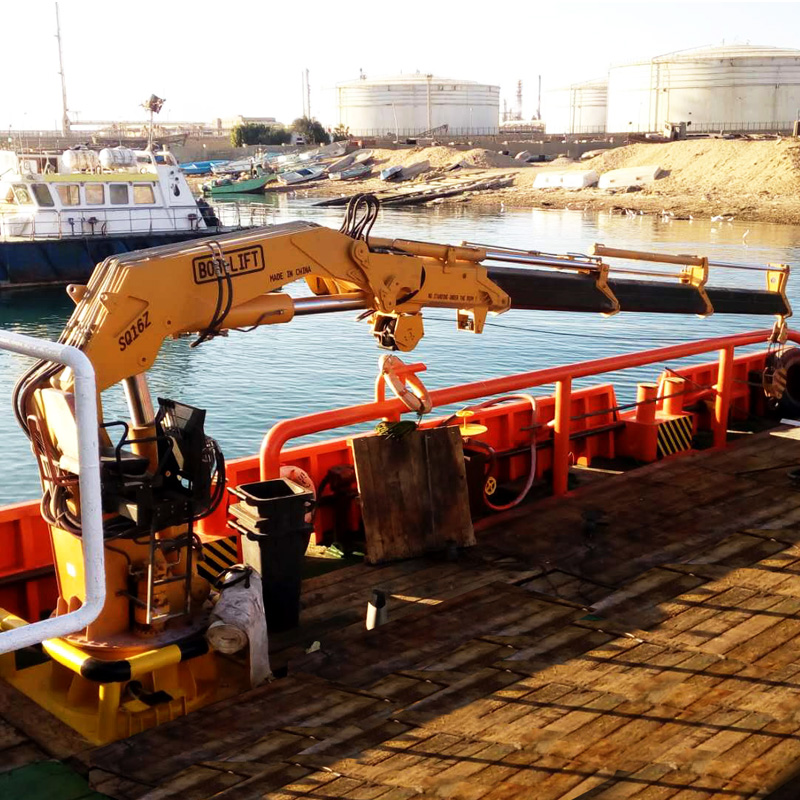Many ships are equipped with deck cranes. Compared with derricks, they require less time to prepare the working cargo and have the advantage of accurately placing (or positioning) the cargo in the cabin. On container ships in ports without special container handling facilities, cranes equipped with special container handling devices are essential.
Deck cranes need to lift, luff, and rotate, and each movement requires a separate electric or hydraulic motor. Most cranes use a rope system to achieve luffing, which is usually used to provide horizontal luffing-in other words, the geometry of the cable prevents the load from being lifted or reduced by the action of the luffing boom and luffing motor, so it can only Lift the boom instead of the load.

Some cranes are installed in pairs on a public platform that can rotate 360 degrees. The cranes can be operated independently or locked together. Double boom cranes usually provide a lifting capacity of up to 50 tons.
If necessary, most cranes can be equipped with two gears to select a faster maximum lifting speed when the load is less than half. For a 5-ton crane with a full load, the maximum lifting speed range is 50-75m/min, and the slewing speed range is 1-2 rev/min. For a 25-ton crane, the maximum full-load lifting speed is in the range of 20-25m/min, and the slewing speed is again in the range of 1-2rev/min. At half load, the lifting speed increases by two to three times.
Drive mechanism and safety functions.
In electric and electro-hydraulic cranes, the crane is usually found to rotate on roller bearings. A rack is formed on the periphery of the support base, and a pinion driven by the motor meshes with the rack to provide driving. All drive motors are equipped with spring-loaded discs or band brakes. When the power or hydraulic fails, these failures are safe. When the crane reaches the lifting and luffing limit, or the lifting cylinder is loose, the brake also operates with the motor cutout.
In the case of an electro-hydraulic crane, it is normal for the motor to drive all three hydraulic pumps, while in the Ward-Leonard electric crane system, the Ward-Leonard generator usually powers all three drive motors.
 truck crane,Truck mounted crane,Marine Crane –
truck crane,Truck mounted crane,Marine Crane –